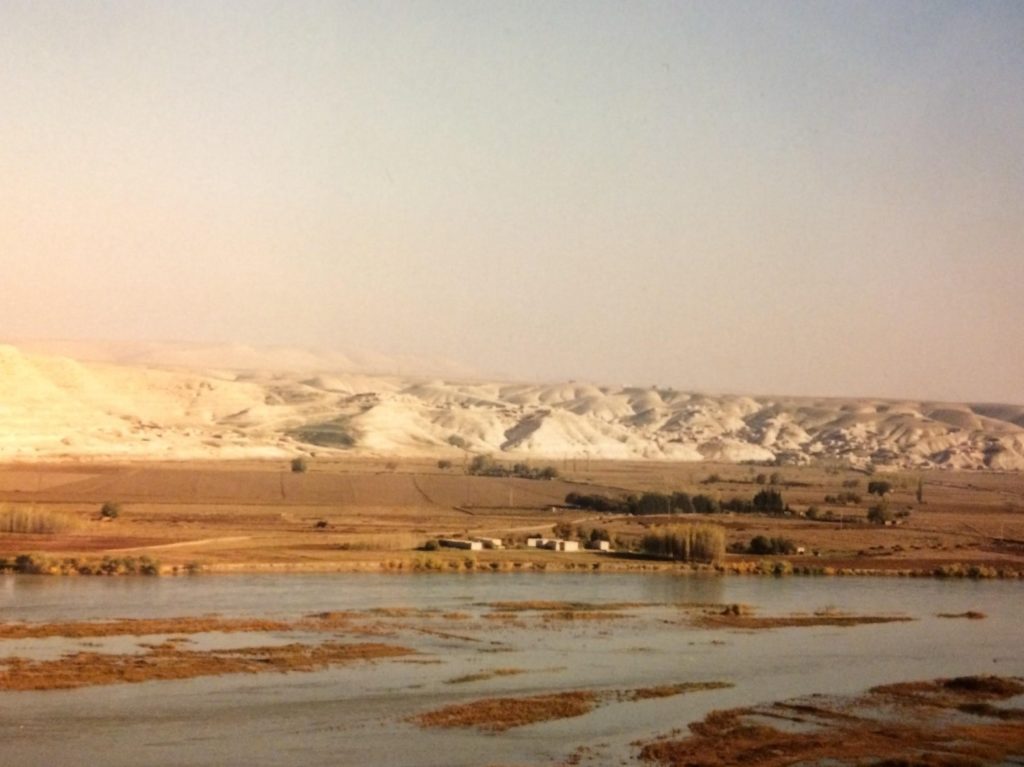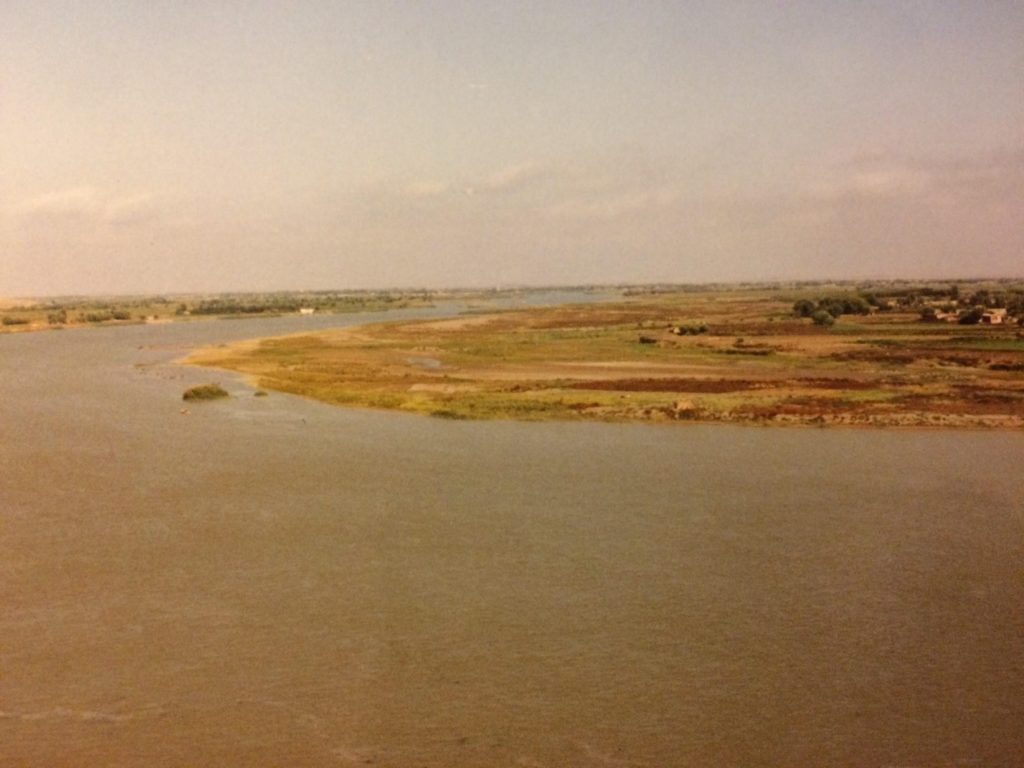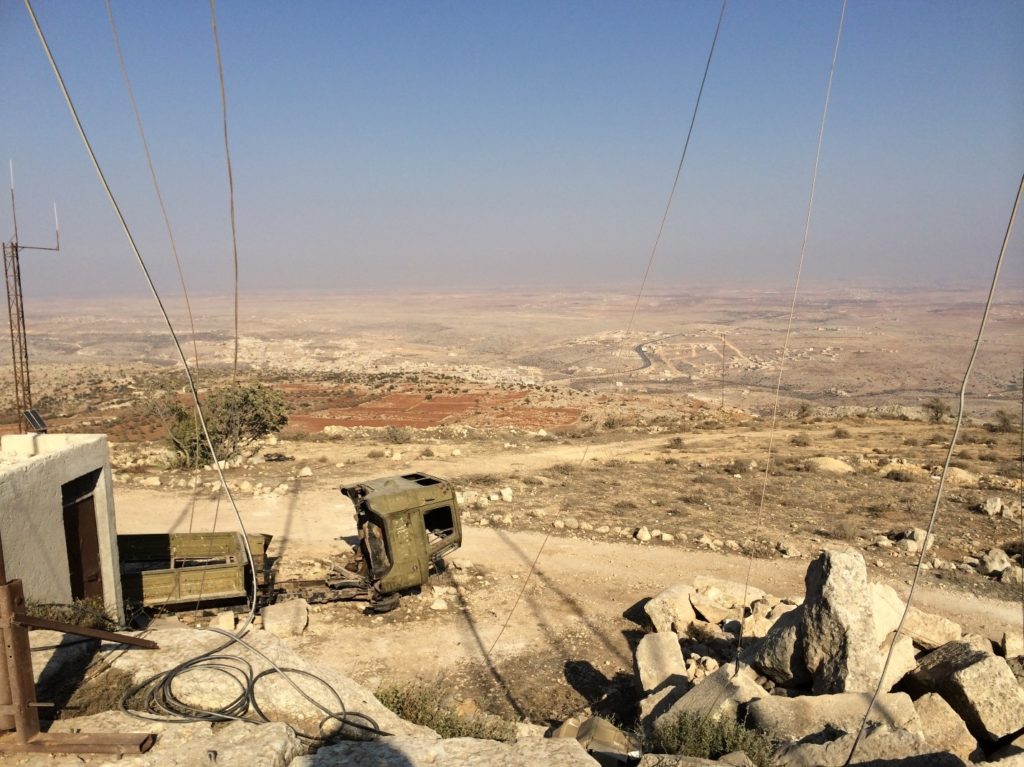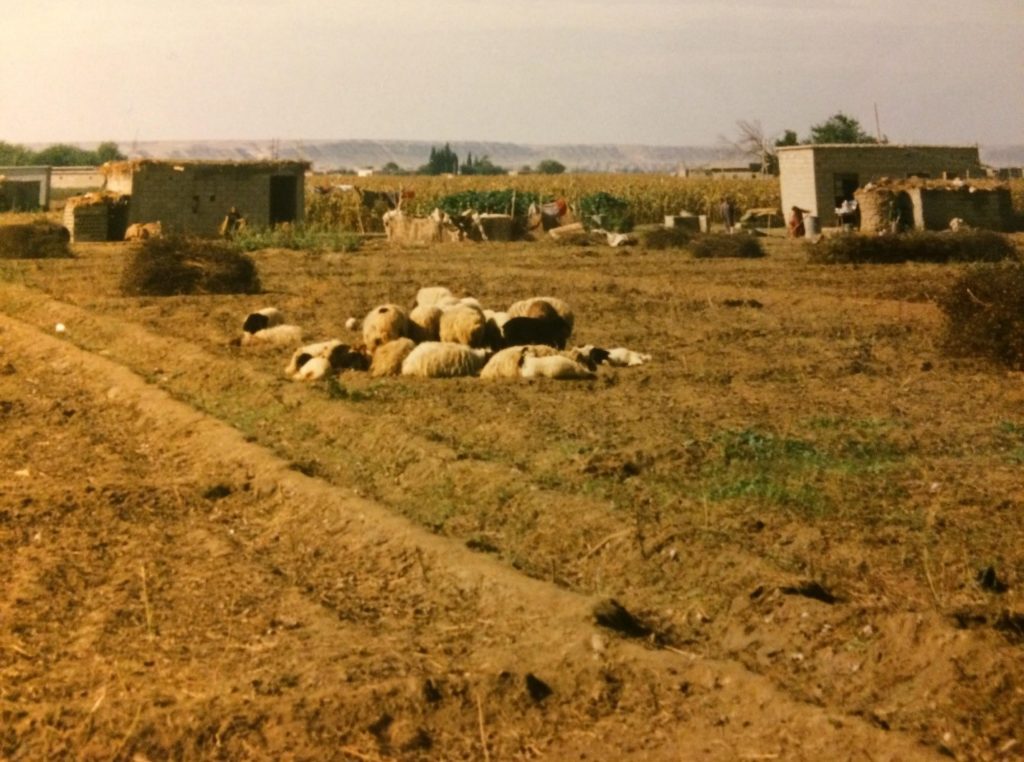Nature knows no borders, yet the border between Turkey and Syria is visible on a satellite image. The difference in color intensity is staggering, as if someone used an eraser on the Syrian side, fading it out a bit. On the Turkish side there is a clear dark green color showing a high agricultural productivity. On the Syrian side there is a brown-grey color with a hint of greenness.
A brief look at the satellite image tells us that it’s not reasonable to blame differences in rainfall levels for the disparity in greenness. It’s not realistic to think that it rains so much more a few hundred meters north of the border – there must be another explanation.
A newly published study shows that this difference was more than just a snapshot: The productivity in Syrian croplands has been steadily declining since 2001. Turkey, on the other hand, has shown a steady increase in productivity during the same time period. A previous study focusing on the period between 1982-2000 showed an increase in vegetation health in both Syria and Turkey, but it seems that this trend has now been reversed in Syria. Why is that?
The area covering northeastern Syria and southeastern Turkey has seen a general reduction in rainfall since 2001, but this can only partly explain the situation. Many of these lands are not directly dependent on rainfall alone. Instead they are irrigated using water coming from rivers, lakes, and dams, or from groundwater saved in aquifers below ground.
In Syria, market oriented agricultural policies adopted in the late 1990s encouraged the production of profitable yet water intensive crops like cotton or sugar beet in certain areas, which led to the overuse of groundwater and land degradation through, for example, increased salt levels in the soils. About 60% of Syria’s lands are rainfed – the rest are irrigated. Ground water made up nearly 60% of all irrigation water in 2000, but the country also has several dams to secure irrigation water and hydropower supply.

Turkey is generally much better off in terms of water and infrastructure for agriculture. In 2014 Turkey had 2947m3/capita/year of internal renewable water resources (the amount of water inside a country that is replenished through river flow and precipitation). The corresponding number for Syria was 371 m3/capita/year. In 2002, Syria had 417 m3/capita/year, while Turkey had 3485 m3/capita/year.
Both Turkey’s and Syria’s ground water resources have been on a decline for more than a decade, but Turkey is not a water scarce country according to the Falkenmark water scarcity indicator, where scarcity is defined as internal renewable water resources below 1000 m3/capita/year. Syria, on the other hand, has been a water scarce country since the 1970s.
Turkey is located upstream from Syria, which means that it has control of the water resources flowing downstream in the Euphrates-Tigris river basin. An agreement from 1987 stipulates that Turkey should let through 500 m3/s to downstream countries, but this agreement has been violated several times, causing tensions among the riparians. In 1977, Turkey started its ‘infamous’ Southeastern Anatolia Project that envisaged the construction of 22 dams, 19 hydropower plants, and a number of irrigation networks. This project is known to have caused further tensions between Turkey and Syria, as it severely decreased the waterflow to the latter.

Drought-Induced Conflict?
Several studies and reports have suggested that the 2007-2009 drought was a factor contributing to the Syrian uprising. The narrative describes a severe drought that was exacerbated by climate change and which led to an extensive crop failure in Syria. The negative effects on rural livelihoods reportedly led to a strong rural to urban migration pattern, which placed further strain on cities and subsequently increased tensions and discontent with the government among residents.
It has generally been agreed that the drought had negative socio-economic consequences for the rural population, but to what extent the drought was a major reason for mass migration to cities, or for civil unrest, has recently been questioned.
Furthermore, the Syrian civil war has been put forward as a clear example of a climate-induced conflict, even though no scientific evidence for a climate-conflict link exist. A recent study investigating the claimed links between climate change, drought, migration, and conflict in Syria, has concluded that the evidence is weak and that we should be cautious with drawing such conclusions.

A question that has seen less attention in the debate about the Syrian drought is “what made this drought so severe?” Drought is a recurrent climatic event in Syria and in the Middle East as a whole. There have been numerous droughts in the region since the 1960s and several of them have had a significant impact on agriculture and livelihoods. Why did this drought trigger such socio-economic stress in Syria but not the neighboring countries?
A combination of geographical properties, power relations, hydropolitics, national policies and local water resource management created a situation of vulnerability in Syria. When the drought struck in 2007/2008, land and water resources were already under great stress. The northeastern region of Syria, which saw the strongest reduction in rainfall, was also the most vulnerable due to its heavy reliance on agriculture, high rates of poverty, and low literacy and education levels.
Government policies further affected the ability of the rural population to cope with the drought. During the drought period, the Syrian government canceled several state subsidies, among them subsidies on fuel and fertilizer prices. While limiting subsidies on fuel and fertilizer may reduce the overuse of resources, the timing for those cuts was bad. As fertilizers became more expensive, farmers had problems maintaining the yield levels. In addition to that, the increased fuel prices made it more expensive to pump water for irrigation and transport harvested crops to the market.
At this time, the Syrian government also decided to dismantle a microfinancing network designed to provide economic security to rural households. The reason behind this government decision is not completely clear, but one hypothesis is that the financial and administrative autonomy that the network created among rural villages came to be viewed as a threat to the central authorities.
Whether the decision among rural households to leave for the cities during 2008-2009 was driven by a lack of rainfall, or a deteriorating situation with little government support, is still not completely understood. The reasons behind migration patterns are often complex and, in the face of a drought, migration is not the only adaptation alternative.

Syria became water-stressed due to both external and internal factors. Reduced rainfall levels and an unfavorable position in the Euphrates-Tigris river basin contributed to Syria’s socio-economic vulnerability to drought. These are factors that are difficult to control nationally.
An unsustainable management of water and land resources, socio-economic inequality, and badly timed government policies created a volatile situation with widespread socio-economic vulnerability to drought. These are factors that can be controlled on a national level, and had the problems with water stress in Syria been addressed earlier we might have seen a less severe impact of the drought.
It is misleading to view the case of the Syrian drought as an example of climate-induced conflict. There were many socio-economic and political factors at play at the same time, and it is unrealistic to try to identify a single root cause of the uprising. What we should take away from the Syrian case is, however, the importance of sustainable resource management policies to build resilient societies that will prevent situations so disastrous that they can be seen from space.
[Main photo: A view of the border between southeastern Turkey and northeastern Syria (Map data from Google, Landsat/Copernicus)].




